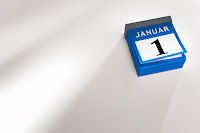 If you didn’t get enough shopping on Black Friday you will have more opportunities to snag some bargains as you head back to work on Cyber Monday. Cyber Monday kicks off the shopping season for online bargain hunters. There are pros and cons of shopping online. While online shopping can result in some great deals and save time waiting in long lines, it also offers more opportunity for theft and fraud. As part of the Stop. Think. Connect.™ Campaign, DHS posted a list of suggestions to help shoppers protect themselves when searching for those online deals. As you start your online shopping this year, consider the DHS ideas along with some of the other helpful hints on our list.
If you didn’t get enough shopping on Black Friday you will have more opportunities to snag some bargains as you head back to work on Cyber Monday. Cyber Monday kicks off the shopping season for online bargain hunters. There are pros and cons of shopping online. While online shopping can result in some great deals and save time waiting in long lines, it also offers more opportunity for theft and fraud. As part of the Stop. Think. Connect.™ Campaign, DHS posted a list of suggestions to help shoppers protect themselves when searching for those online deals. As you start your online shopping this year, consider the DHS ideas along with some of the other helpful hints on our list.
Consider your company’s Internet use policy. While it may be tempting to spend some time surfing the web for bargain at work, don’t forget your company’s policy on Internet usage. Shopping at work could land you in hot water with your boss.
Create a separate email address. To avoid spam and other unwanted offers to your primary email address, consider creating an email address specifically for shopping online. You can use Gmail, Hotmail, Yahoo and other email providers to create a free account.
Pay attention to website URLs. Check the URL for the websites you visit. Counterfeit websites sometimes use a variation in spelling or a different domain to trick users.
Look for security symbols. Verify the website is security enabled by looking for web addresses with https// or shttp:// on the page where you enter credit card and other personal information. Check to make sure there is a tiny closed padlock in the address bar, or on the lower right corner of the window.
Pay with a credit card, not a debit card. If you pay with a credit card, your transaction will be protected by the Fair Credit Billing Act and you may not have the same level of protection when using your debit card. Cardholders are usually liable for the first $50 in unauthorized charges when fraudulent use is reported timely. If online criminals obtain your debit card information, they have the potential to empty your bank account. Consider obtaining a temporary card from the bank with a set limit that you have loaded onto the card.
Keep a record of purchases and check your statements. Keep a record of your purchases and compare them to your statements. If there is a discrepancy, report it immediately. You can print all of the receipts or take a screen shot of your details and copy it into one word processing document or save the confirmation emails to save paper.
Verify your operating system, browser and antivirus software are updated. Internet Explorer 9 is the newest version of the Microsoft web browser. Make sure your antivirus software is running.
Safeguard your private information. Some fields, such as your address, are necessary to complete transactions, but some companies will ask for more. Don’t feel obligated to provide information that is not relevant to the transaction, such as your social security number. Don’t share your passwords or allow the computer you are using to “remember” them. Use a combination of numbers, letters, and symbols for your password instead of easy-to-find birth dates, phone numbers, or addresses.
Read the fine print. Some of the terms of purchase may automatically sign you up for unwanted offers, which usually means a flood of spam to your inbox. Be sure the “uncheck” boxes that may already contain check marks if you do not agree to the terms.
Ignore pop-up messages. Block pop-up messages. If you receive a pop-up, click on the "X" at the top right corner of the title bar to close the pop-up message. If you can’t find the “X” or a way out, close down the site or shut down your computer, if necessary.
Do not use public computers or public wireless to make online purchases. Public computers may contain malware that steals your credit card information when you place your order. Criminals may be monitoring public wireless for credit card numbers and other confidential information.
If you have problems shopping online, contact the seller directly. If your problem is not resolved, check with one of the following sources.
- Better Business Bureau at: www.bbb.org
- Federal Trade Commission at: www.ftc.gov/
- Your state’s consumer protection agency.
Happy Cyber-Shopping!


